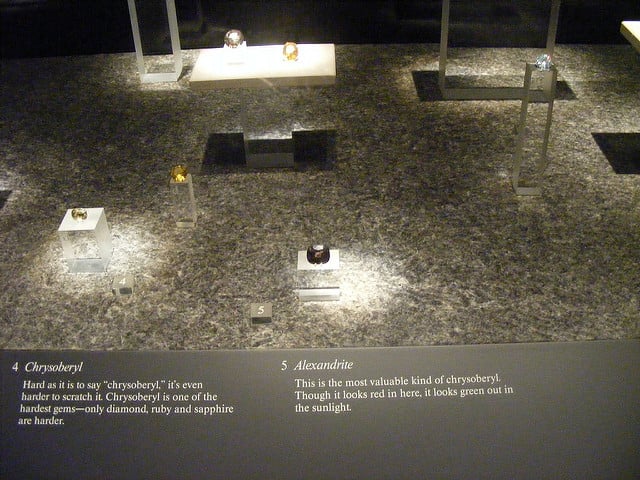Is My Alexandrite Just A Color-Change Chrysoberyl?
Buyer beware! Not all color-change chrysoberyl is alexandrite. Learn the classic color ranges of true alexandrite and avoid being scammed by marketers.
2 Minute Read
We've received a number of questions from gem enthusiasts and buyers about the "true" color of alexandrite. We've also received questions about the color change needed for a reputable gemological lab to classify a chrysoberyl gem correctly as alexandrite. Buyer beware! Not all color-change chrysoberyl is alexandrite, despite the assurances of sellers. Color-change chrysoberyl and alexandrite are two different varieties of chrysoberyl. There are strict standards for the color shift that has to be observed under specific lighting conditions before a gem can be classified as alexandrite.
Here are the classic color-change ranges chrysoberyls must show to be identified as alexandrites:
| Daylight (Sunlight) | Incandescent light |
| blue Green | orange Red |
| very slightly blue Green | Red |
| Green | slightly purple Red |
| slightly Green | Purple Red |
| yellow Green | Red purple or Purple red |
(Note: In color descriptions, a capital letter on one hue means it's the dominant color. Those beginning with a lower-case letter are the less dominant or secondary color. When you see the color description written as "Green yellow" or "Red purple," this tells you which is the dominant and which is the secondary color).
You shouldn't have to guess about these color changes, nor should the color change be feeble. In a correctly classified alexandrite, the color change is very dramatic and obvious. If any of the above ranges are observed in a particular chrysoberyl, it should be classified as an alexandrite. If any other color-change combinations are observed, the stone should be identified as a color-change chrysoberyl.
Sources of Color-Change Chrysoberyl
Historically, fine-grade alexandrite originated from the Ural Mountains in Russia. However, recent finds of good material from Brazil and some East African countries have exhibited good to fine color changes within the classic range of alexandrite.
A great deal of gem-quality material is also being sourced from various areas in South America, East Africa, and Sri Lanka. The color change in this material typically ranges from Green to Yellow, brownish Red to Purple, or yellow Green to blue Green. Other combinations are occasionally seen. These are outside the classic range.
What To Watch For When Buying Alexandrite
Some of these non-classic color changes may be dramatic but don't indicate an alexandrite. Although these stones may be marketed as alexandrite and command very high prices, they won't grade out as alexandrite when sent to a gemological laboratory.
In addition to the color ranges, price should almost always be a clue that you're likely dealing with a color-change chrysoberyl and not an alexandrite. Many of these stones can be seen on various TV shopping networks. For just a good grade of this so-called alexandrite, you might pay $2,500 - $4,500 in the size range of 1-2 carats. For a true alexandrite, a stone with a slight green/red color change can cost $6,000 per carat in that size. For a good grade of that size, the cost goes up to $60,000 per carat!
Color-change chrysoberyls are uncommon and also command hefty prices. They're a great addition to any gemstone collection. However, don't pay for an alexandrite when you're not getting one. (Editor's Note: There is no gemological consensus for restricting the definition of alexandrite to color-change chrysoberyl gems with a limited, "classic" range of color shift).
Related Articles
Chrysoberyl Value, Price, and Jewelry Information
Alexandrite Value, Price, and Jewelry Information
How Can a Gemstone’s Optic Sign Change?
Alexandrite Buying Guide
Latest Articles
Identifying Synthetic Gems
Ten Big, Beautiful, and Affordable Engagement Ring Stones
Rhodochrosite Value, Price, and Jewelry Information
Ruby and Sapphire Survey: Where Do You Draw the Line?
Never Stop Learning
When you join the IGS community, you get trusted diamond & gemstone information when you need it.
Get Gemology Insights
Get started with the International Gem Society’s free guide to gemstone identification. Join our weekly newsletter & get a free copy of the Gem ID Checklist!
